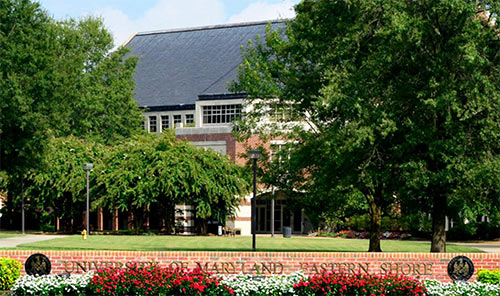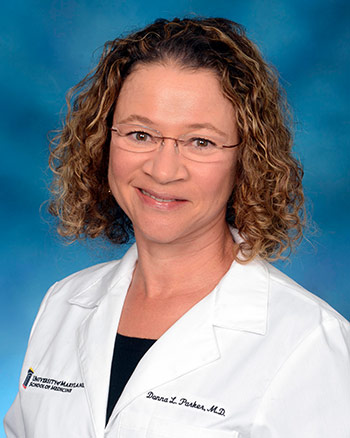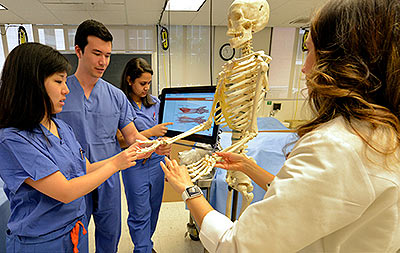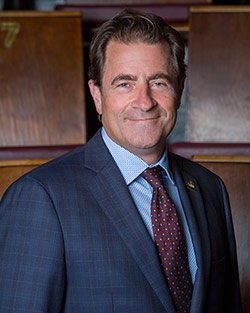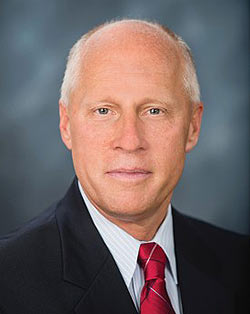Newswise — With a commitment to addressing rural health disparities and the challenges faced by Maryland’s rural Eastern Shore residents, the University of Maryland School of Medicine has launched the Rural Health Equity and Access Longitudinal Elective (R-HEALE). The program is designed to train and place incoming medical students in Eastern Shore healthcare practices. It has received $1.4 million in state funding to launch the effort with added funds provided by University of Maryland, Baltimore, University of Maryland Eastern Shore, the Rural Maryland Council and philanthropic donors.
The program, in partnership with the University of Maryland Eastern Shore (UMES), has accepted six current first-year medical students with an interest in rural health. Three students have been awarded full-tuition scholarships with a commitment to working on the Eastern Shore for four years after completing residency training. The students will have didactic and mentoring sessions in Baltimore, followed by research and clinical experiences on the Eastern Shore. The long-term goal is to ultimately support 10 new students interested in rural health in this elective program each year, with 10 full in-state tuition scholarships.
Nearly the entire Eastern Shore is designated by the federal government as a medically underserved area (MUA) and as a “health professional shortage area,” which means residents often lack access to the medical care they need to address pressing health concerns. The five counties in Maryland with the fewest primary care physicians per capita are all in the Eastern Shore region, with Caroline County having only one health provider per 2,500 state residents compared to Baltimore County which has one provider per 1,000 state residents.
“People living in rural areas on the Eastern Shore often face challenges with access to medical care, which may lead them to skip important appointments or travel an hour or more to Annapolis or Baltimore for the treatment they need,” said Donna Parker, MD, Senior Associate Dean for Undergraduate Medical Education at UMSOM. “With this program, our goal is to develop a cohort of up to 10 additional physicians annually to address the healthcare shortage. By increasing access and reducing long provider wait times, we hope to improve health outcomes in the region.”
According to a recent study conducted by UMSOM researchers, residents of rural areas face significantly higher risks of developing complications from chronic diseases such as diabetes. Their findings revealed that those living in small towns, with fewer than 2,000 people, were 10 percent more likely to have a heart attack, 5 percent more likely to experience heart failure, and 4 percent more likely to have end-stage kidney disease than those living in large cities.
“More than one million Maryland residents live in underserved areas and the largest proportion come from rural Eastern Shore counties. This is associated with higher infant mortality rates, shorter life expectancy, and poor health outcomes including complications from diabetes and high blood pressure,” said Mark T. Gladwin, MD, who is the John Z. and Akiko K. Bowers Distinguished Professor and Dean of UMSOM, and Vice President for Medical Affairs at University of Maryland, Baltimore. “We want to provide patients with access to the long-term care they need to both prevent and effectively manage chronic diseases. This first class of physicians represent our long-term commitment to improving rural health outcomes and creating a better quality of life for Marylanders on the Eastern Shore.”
The R-HEALE program aims to include a program held on the University of Maryland Eastern Shore campus where students will be introduced to foundational courses on the social determinants of health and barriers to care access in the region. Lecture topics will likely include health disparities, social justice and rural medicine, and patient care. Students will be paired with a physician mentor on the Eastern Shore allowing them to observe patient interactions in a rural healthcare setting throughout their years in medical school.
“I am very excited to receive mentorship from doctors who are serving in rural health,” said Tahreem Riaz, R-HEALE scholarship student who is from a rural area in Punjab, Pakistan. “I think it’s a great opportunity to learn and will provide us with the ability to face the challenges of rural practice while finding solutions to complex issues.”
In the summer of their first year, they will engage in a rural health-based research project. They will also have opportunities to work clinically on the Eastern Shore during both their third and fourth years to complete clerkships and electives.
“This is a truly longitudinal experience, where students will engage in collaborative learning throughout the four years of medical school, so they can graduate with the range of skills necessary to serve the needs of the patient population on the shore,” said Leah Millstein, MD, Course Director for the R-HEALE Program and Associate Professor of Medicine.
“I hope to use my knowledge of the community to better connect with patients and form trusting relationships that will empower them as they navigate the healthcare system,” said Sarah MacDonald, R-HEALE scholarship student who grew up in Salisbury, MD.
The R-HEALE program is currently partnered with the University of Maryland Eastern Shore, University of Maryland Shore Regional Health (UM SRH), TidalHealth, the Dorchester County Health Department, Eastern Shore Area Health Education Center (AHEC) and the Maryland Area Health Education Center (MAHEC). Additional partnerships with Eastern Shore healthcare organizations are to be established to place students in various clinical experiences during their training.
"Strengthening our provider workforce is a top priority at UM SRH, and programs like R-HEALE will help us attract providers who want to practice in rural communities,” said Ken Kozel, President and CEO of UM SRH. “We greatly appreciate our partnership with the School of Medicine toward enhancing access across the Shore.”
Learn more about the R-HEALE elective.
Resources for the Media:
Video Assets: Interviews and B-roll
Please download videos or audio to your computer before viewing them.
About the University of Maryland School of Medicine
Now in its third century, the University of Maryland School of Medicine was chartered in 1807 as the first public medical school in the United States. It continues today as one of the fastest growing, top-tier biomedical research enterprises in the world -- with 46 academic departments, centers, institutes, and programs, and a faculty of more than 3,000 physicians, scientists, and allied health professionals, including members of the National Academy of Medicine and the National Academy of Sciences, and a distinguished two-time winner of the Albert E. Lasker Award in Medical Research. With an operating budget of more than $1.2 billion, the School of Medicine works closely in partnership with the University of Maryland Medical Center and Medical System to provide research-intensive, academic, and clinically based care for nearly 2 million patients each year. The School of Medicine has more than $500 million in extramural funding, with most of its academic departments highly ranked among all medical schools in the nation in research funding. As one of the seven professional schools that make up the University of Maryland, Baltimore campus, the School of Medicine has a total population of nearly 9,000 faculty and staff, including 2,500 students, trainees, residents, and fellows. The School of Medicine, which ranks as the 8th highest among public medical schools in research productivity (according to the Association of American Medical Colleges profile) is an innovator in translational medicine, with 606 active patents and 52 start-up companies. In the latest U.S. News & World Report ranking of the Best Medical Schools, published in 2023, the UM School of Medicine is ranked #10 among the 92 public medical schools in the U.S., and in the top 16 percent (#32) of all 192 public and private U.S. medical schools. The School of Medicine works locally, nationally, and globally, with research and treatment facilities in 36 countries around the world. Visit medschool.umaryland.edu

